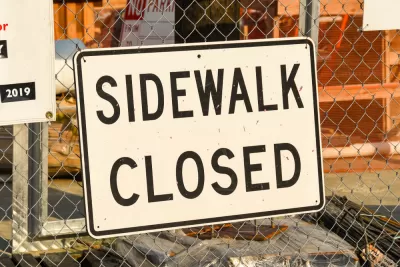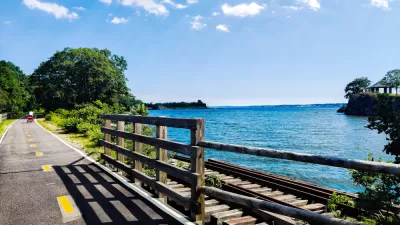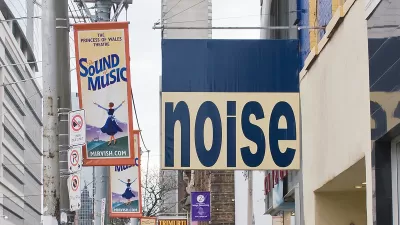A new study by researchers at Illinois State University and the University of Michigan measured the informal footpaths—also known as "desire lines"—of Detroit.

Alec Foster and Joshua P. Newell have published a study for the Landscape and Urban Planning journal that measures the informal footpaths known as desire lines crisscross the city of Detroit.
According to the abstract for the study, Detroit has more than 5,680 of these footpaths, totaling more than 150 miles, and a complete knowledge of those desire lines can be a value to transportation planners, urban theorists, and community activists.
"Transportation planners may value desire lines for their efficiency, reducing travel time and distance. Urban theorists and community activists, however, view desire lines as a form of resistance and reclamation of space for a public poorly served by urban institutions," according to abstract.
The idea proposed by this study, however, is that these two benefits can co-exist. "Desire lines are creative attempts to expand urban possibilities, enhance efficiency, and reaffirm agency in increasingly regulated cities."
Using spatiotemporal analysis, the study also finds that desire lines are disappearing in Detroit, correlating with "changes in land ownership, management practices, and population dynamics."
"The loss of desire lines exposes the limits of informal practices and indicates the need for connections to broader relationships of power and governance," according to the abstract.
FULL STORY: Detroit’s lines of desire: Footpaths and vacant land in the Motor City

Maui's Vacation Rental Debate Turns Ugly
Verbal attacks, misinformation campaigns and fistfights plague a high-stakes debate to convert thousands of vacation rentals into long-term housing.

Planetizen Federal Action Tracker
A weekly monitor of how Trump’s orders and actions are impacting planners and planning in America.

San Francisco Suspends Traffic Calming Amidst Record Deaths
Citing “a challenging fiscal landscape,” the city will cease the program on the heels of 42 traffic deaths, including 24 pedestrians.

Detroit Says Problems With Property Tax Assessments are Fixed. Advocates Disagree.
With higher-valued properties under assessed and lower-valued properties over assessed, advocates say there's still a problem with Detroit's property tax system.

Defunct Pittsburgh Power Plant to Become Residential Tower
A decommissioned steam heat plant will be redeveloped into almost 100 affordable housing units.

Trump Prompts Restructuring of Transportation Research Board in “Unprecedented Overreach”
The TRB has eliminated more than half of its committees including those focused on climate, equity, and cities.
Urban Design for Planners 1: Software Tools
This six-course series explores essential urban design concepts using open source software and equips planners with the tools they need to participate fully in the urban design process.
Planning for Universal Design
Learn the tools for implementing Universal Design in planning regulations.
Heyer Gruel & Associates PA
JM Goldson LLC
Custer County Colorado
City of Camden Redevelopment Agency
City of Astoria
Transportation Research & Education Center (TREC) at Portland State University
Jefferson Parish Government
Camden Redevelopment Agency
City of Claremont





























